Introduction To Monkey Species
Monkeys are fascinating creatures that have been a subject of interest for humans for centuries. They belong to the primate family, which also includes great apes, lemurs, and tarsiers. There are over 260 species of monkeys in the world, with some living in the wild and others in captivity.
Monkeys are classified into two groups based on where they are found, their characteristics, and evolution. Old World Monkeys are native to Africa and Asia, while New World Monkeys are found in Central and South America. Old World monkeys have narrow nostrils that face downward, while New World monkeys have nostrils that face forward, like humans. The classification of monkey species also includes arboreal, terrestrial, and semi-terrestrial species.
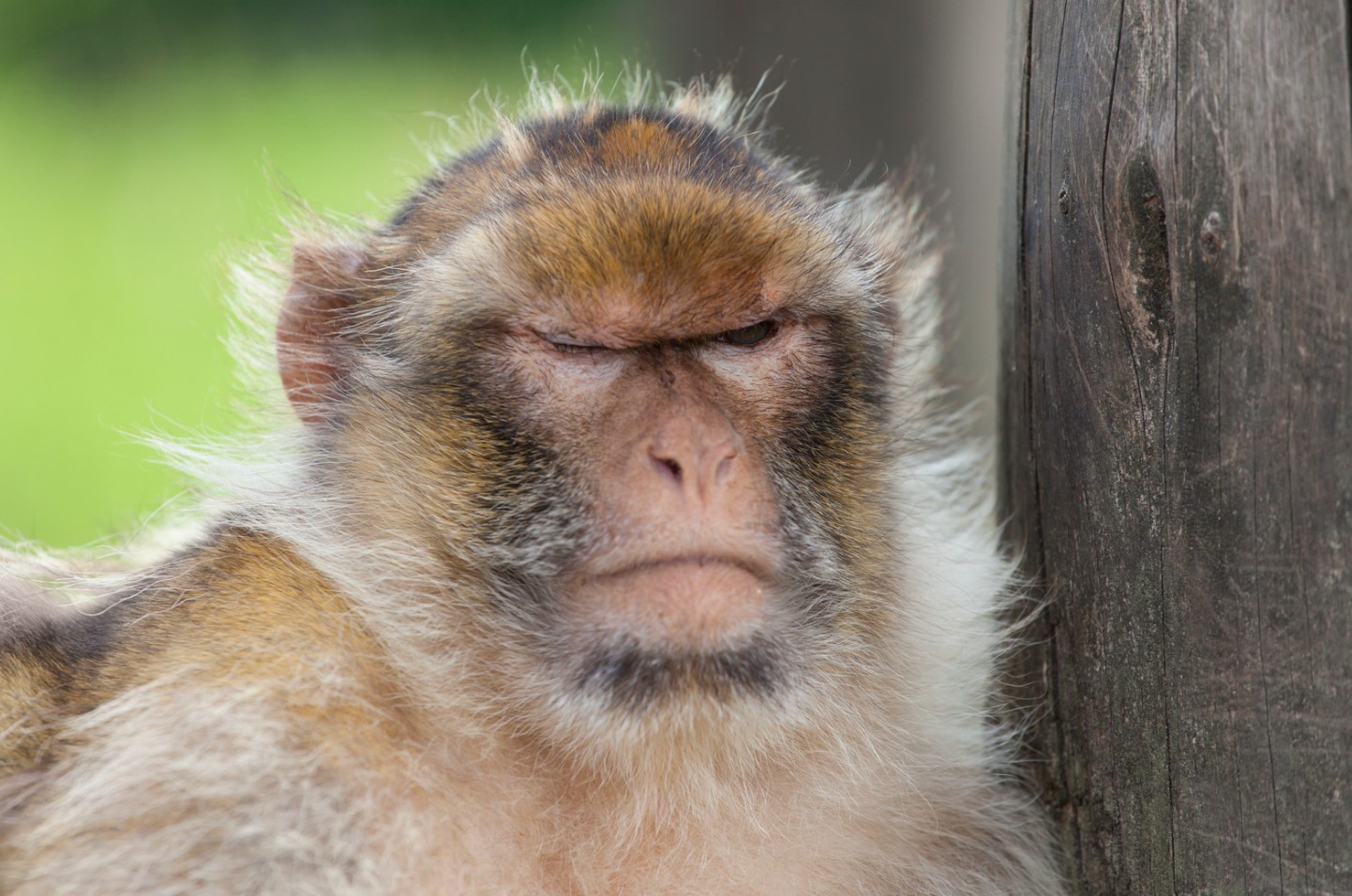
One of the most recognizable monkey species is the chimpanzee, with its distinctive long arms and black fur. Other popular monkey species include the mandrill, with its brightly colored face, and the macaque, known for its intelligence and curious nature.
- Monkey species come in all shapes and sizes, from the tiny pygmy marmoset to the larger mandrills.
- Some monkey species are known for their unique vocalizations, such as the howler monkey.
- Monkeys are social animals that live in groups called troops.
While monkeys are often a source of entertainment for humans, they also play an important role in the ecosystem as seed dispersers and pollinators. Sadly, many monkey species are facing threats such as deforestation, hunting, and disease. It is important to understand the delicate balance of these complex creatures and protect them for future generations to enjoy.
| Common Name | Scientific Name | Location |
|---|---|---|
| Chimpanzee | Pan troglodytes | Africa |
| Mandrill | Mandrillus sphinx | Africa |
| Macaque | Macaca fuscata | Asia |
Overall, learning about different monkey species can be a fascinating experience. From their unique characteristics to their vital role in their ecosystem, monkeys are truly amazing creatures. We must all do our part to conserve these fascinating animals and protect their habitats.
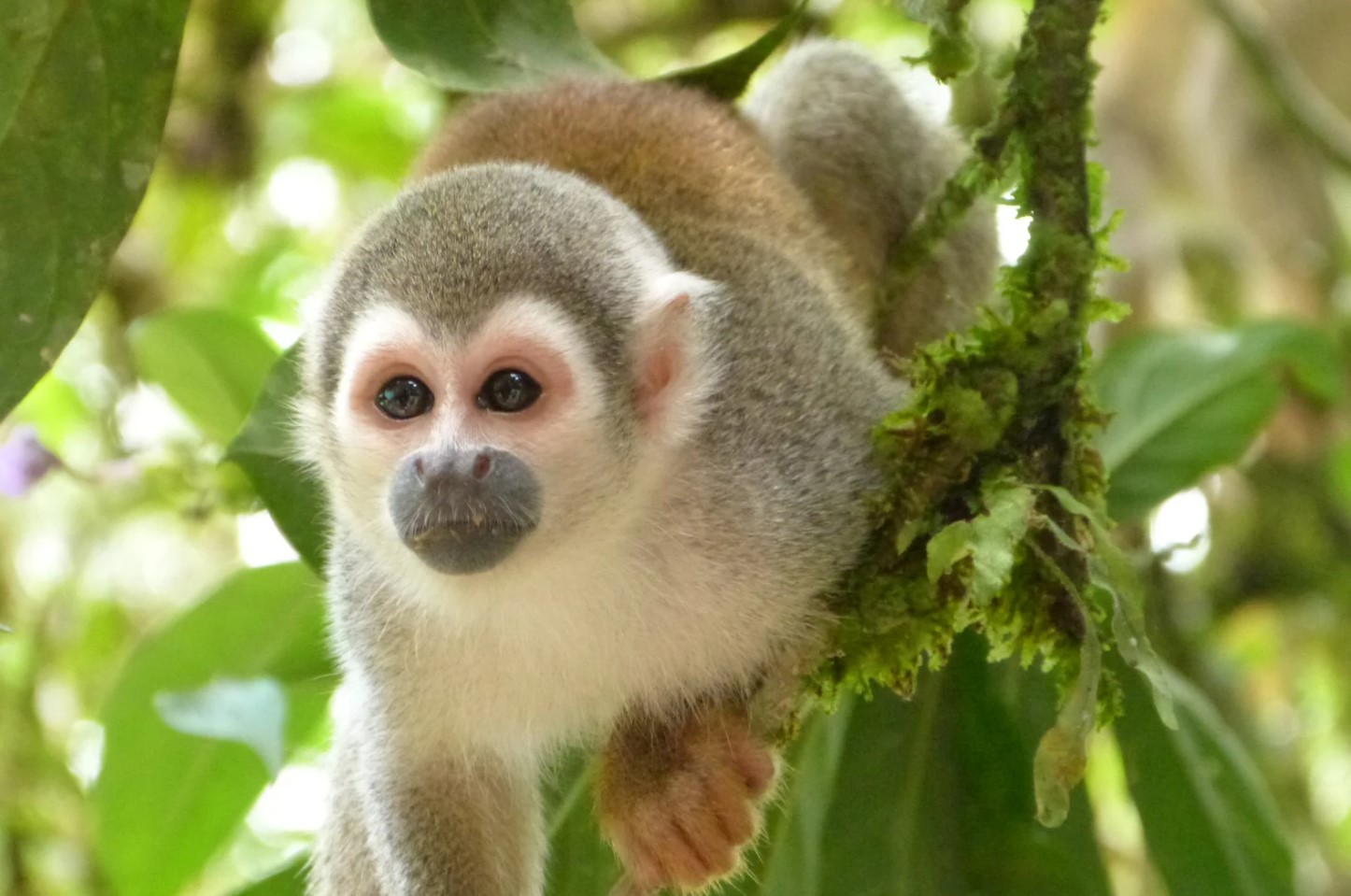
Primates Vs Monkeys: What’s The Difference?
Have you ever wondered what the difference is between primates and monkeys? Although these terms are often used interchangeably, there are actually some important differences between the two. First, let’s define what each term means.
- Primates: This term refers to a group of animals that includes humans, apes, monkeys, and prosimians like lemurs and tarsiers. These animals are characterized by their advanced cognitive abilities and their ability to grasp objects with their hands.
- Monkeys: This term specifically refers to a group of primates that have tails. There are two main types of monkeys: Old World monkeys and New World monkeys.
So what are some of the key differences between monkeys and other primates? Let’s take a closer look:
| Factor | Primates | Monkeys |
|---|---|---|
| Tails | Some primates may have a small tail or no tail at all (like apes and humans) | All monkeys have tails |
| Nocturnal or Diurnal | Some primates are nocturnal and some are diurnal | Primarily diurnal |
| Geographical Location | Primarily found in Africa, Madagascar, Asia, and parts of Central and South America | Found primarily in Central and South America and some parts of Africa and Asia |
Another key difference between monkeys and other primates is their dental formula. Monkeys have a dental formula of 2.1.2.3, which means they have two incisors, one canine, two premolars, and three molars on each side of their upper and lower jaws. This is different from other primates, which have different dental formulas depending on their species.
Overall, while all monkeys are primates, not all primates are monkeys. Understanding the differences between these two groups of animals can help you appreciate the wide variety of creatures that are part of the primate family.
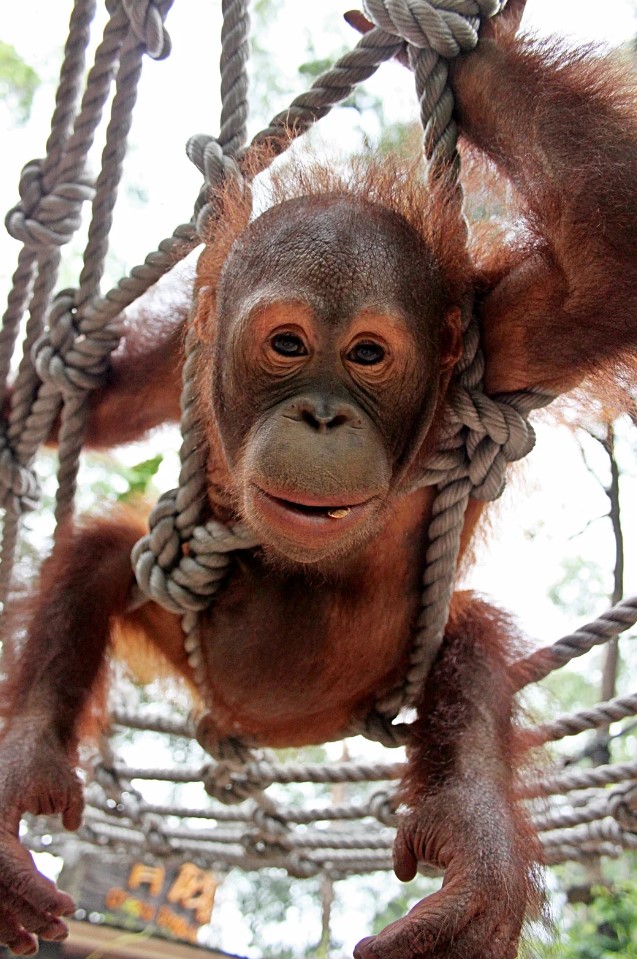
Classification Of Monkey Species
Monkeys are fascinating creatures that are found in different parts of the world. There are over 250 species of monkeys, each with unique characteristics and features that make them stand out from one another. In this blog post, we will be discussing the classification of monkey species.
Primates vs Monkeys: Before we dive into the classification of monkeys, it’s important to understand the difference between primates and monkeys. Primates are a group of mammals that include monkeys, apes, and humans. Monkeys, on the other hand, are a type of primate that have long tails and belong to the suborder Haplorhini.
Classification of Monkey Species: Monkeys can be classified into two main groups: Old World monkeys and New World monkeys. Old World monkeys are found in Africa and Asia while New World monkeys are found in Central and South America. Old World monkeys have narrow nostrils that are close together, while New World monkeys have wide nostrils that are far apart. Another feature that distinguishes these two groups is their tail. Old World monkeys have a non-prehensile tail, which means they cannot grasp objects with it, while New World monkeys have a prehensile tail, which they use to grasp objects like a fifth limb.
- Old World Monkeys:
- Origins: Old World monkeys are believed to have evolved around 25 million years ago in Africa.
- Characteristics: They have narrow nostrils, non-prehensile tail, and are mostly arboreal. Some of the well-known species in this group include baboons, macaques, and colobus monkeys.
- New World Monkeys:
- Evolution: New World monkeys are believed to have evolved around 40 million years ago in South America.
- Traits: They have wide nostrils, prehensile tail, and are mostly arboreal. Some of the well-known species in this group include howler monkeys, spider monkeys, and capuchin monkeys.
In conclusion, monkeys are an incredibly diverse group of animals that have adapted to different environments and habitats. Understanding their classification and unique features can help us appreciate and protect these amazing creatures.
Old World Monkeys: Origins And Characteristics
Old World Monkeys: Origins And Characteristics
Old World Monkeys are an integral part of the primate family. They are referred to as Old World Monkeys as they are primarily found in Africa and Asia, while their New World counterparts are found in Central and South America. With over 160 species of Old World Monkeys, these primates have a rich history and are quite fascinating creatures. They belong to the Cercopithecidae family, which is further divided into two subfamilies: Colobinae and Cercopithecinae. The Old World Monkeys have a distinct set of characteristics and origins that make them stand out from other primates.
The Old World Monkeys, or Cercopithecinae, are highly diverse primates that display many unique physical characteristics. They possess narrow nasal openings which are downward-facing, unlike those of New World Monkeys. They have a tail, which is not prehensile and generally shorter than their body length. Unlike New World Monkeys, they are also able to move easily on the ground as they have longer hind limbs, which are suited for walking and running. Old World Monkeys have opposable thumbs that enable them to grasp and manipulate objects effectively. They are also known for their highly developed communication skills and social structure.
Old World Monkeys have been around for approximately 25 million years, with the first fossils discovered in Egypt. These primates have evolved over time and adapted to different environments, from dense forests to savannas. Due to their evolution, their diets have also varied. Some species are herbivores, feeding on fruits, leaves, and seeds, while others feed on insects, small mammals, and birds. They have survived through many natural calamities like ice ages and volcanic eruptions, and have adapted to new habitats and food sources accordingly.
| Common Old World Monkey Species | Origin | Characteristics |
|---|---|---|
| Baboons | Africa | Sharp canines, terrestrial |
| Cynomolgus Macaque | Southeast Asia | Omivores, used for medical research |
| Proboscis Monkey | Borneo | Long, protruding noses |
| Rhesus Macaque | India, China | Used for biological research, have flexible social structure |
Old World Monkeys continue to thrive in their natural habitats, but many species are at risk of extinction due to habitat destruction and hunting. Efforts are being made to conserve these primates and their habitats. Understanding their origins, characteristics, and behavior is essential to conservation efforts. Through research and education, we can help to protect these fascinating Old World Monkeys for generations to come.
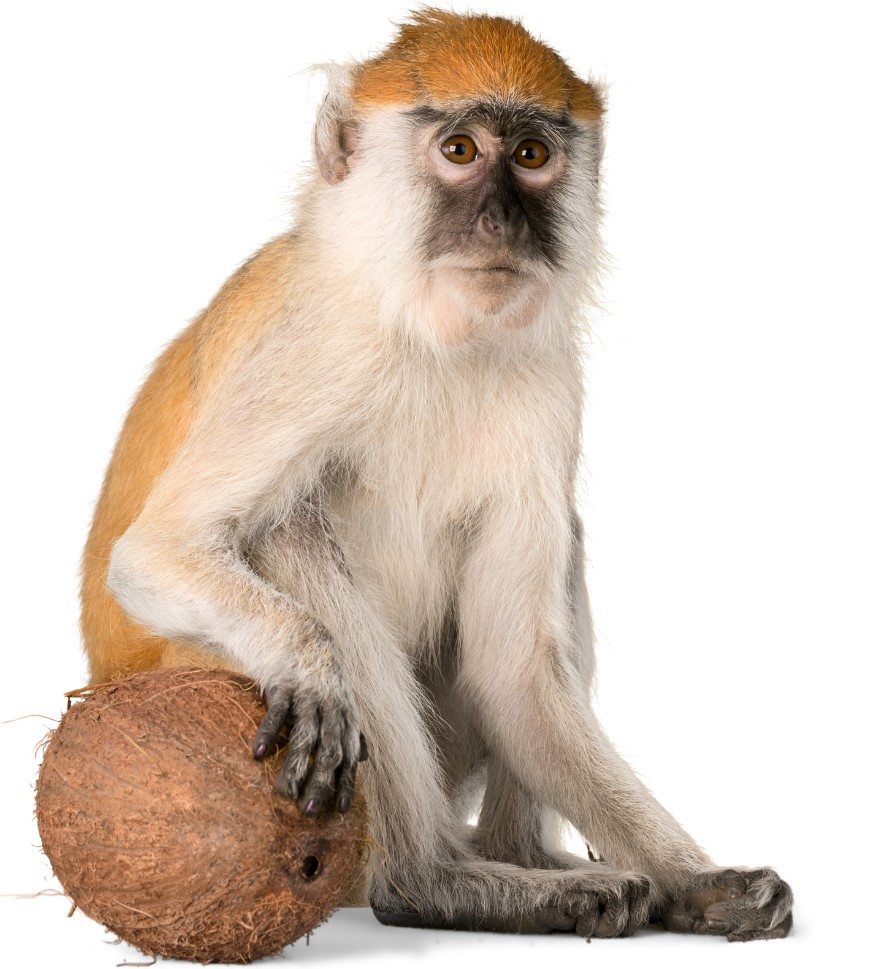
New World Monkeys: Evolution And Traits
New World Monkeys: Evolution And Traits
New World monkeys, also known as platyrrhines, are a diverse group of primates that are native to Central and South America. They are considered new world monkeys because they evolved in the Americas after a split from the old world monkeys, which are native to Africa and Asia. One of the most distinctive traits of new world monkeys is their flat and broad noses, which are adapted to their arboreal lifestyle. They also have prehensile tails, which means they can grasp onto things, allowing them to move through the trees with incredible agility.
As we delve further into the evolution of new world monkeys, we begin to understand the wide array of physical and behavioral traits that set them apart. For instance, some species of new world monkeys are diurnal, meaning they are active during the day. Others, however, are nocturnal and tend to be more active at night.
- New World monkeys eat a variety of foods that include fruits, insects, seeds, and leaves.
- Some species of new world monkeys are arboreal, living their entire lives among the trees, while others reside solely on the ground.
- At the same time, our understanding of new world monkey behavior has increased greatly, revealing complex social structures and communication methods.
One intriguing example of communication among new world monkeys is the method of scent marking. Some species will urinate on their hands, then rub their hands over their bodies, and even use the scent to mark and defend their territories. These primates also use vocalizations and body language to communicate with one another, highlighting their intelligence and complexity.
It is important to remember that despite their unique characteristics, new world monkeys are at risk of habitat loss and are considered endangered in many areas. Conservation efforts, such as the creation of protected areas and the rescue and rehabilitation of injured monkeys, are vital in ensuring their survival. Furthermore, research into the behavior and biology of new world monkeys continues to shed light on just how remarkable these primates are.
The İntelligence Of Monkeys: Amazing Facts!
Monkeys are fascinating creatures that never cease to amaze with their intelligence and abilities. These animals, which belong to the primate family, are highly evolved and have been studied by scientists for centuries. The intelligence of monkeys is something that never fails to surprise us, and there are plenty of amazing facts that demonstrate just how smart these animals can be.
One of the most remarkable things about monkeys is their ability to use tools. While it was once believed that only humans could use tools, we now know that many monkeys are capable of using objects in creative ways. For example, some monkeys have been observed using sticks to extract insects from tree bark, while others have been seen using rocks to crack open nuts. This ability to improvise and use objects in new ways is a clear sign of intelligence.
- Monkeys have incredibly sharp memories and are able to remember specific details and sequences of events for long periods of time. This is something that has been observed in both the wild and in captivity.
- Another sign of monkey intelligence is their ability to communicate with each other in complex ways. Monkeys use a range of vocalizations and gestures to communicate, often conveying detailed information about their surroundings and social hierarchies.
Monkeys are also capable of planning and problem-solving, which are two key indicators of intelligence. Studies have shown that some monkey species are able to plan ahead in order to achieve a particular goal, while others are able to solve complex puzzles and navigate mazes with ease.
| Monkey Intelligence | Examples |
|---|---|
| Tool use | Using sticks to extract insects, using rocks to crack nuts |
| Memory | Remembering specific details and sequences of events |
| Communication | Using a range of vocalizations and gestures |
| Planning | Planning ahead to achieve a goal |
| Problem-solving | Solving complex puzzles and navigating mazes |
In conclusion, the intelligence of monkeys is truly remarkable. These animals are capable of using tools, remembering specific details, communicating in complex ways, planning ahead, and solving problems. While there is still much to learn about these amazing creatures, what we already know about their intelligence is truly awe-inspiring.
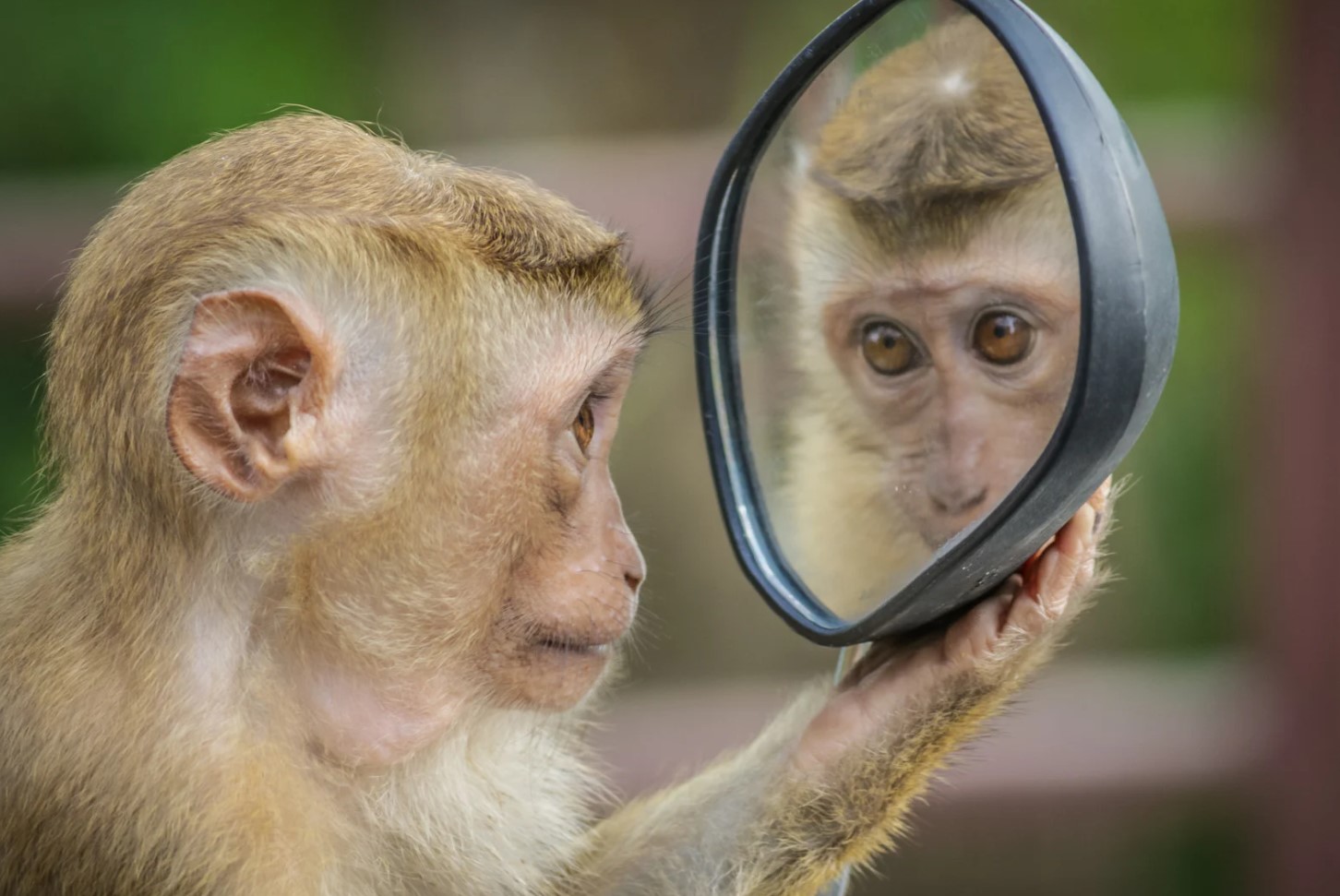
Monkey Habitats: Where Can You Find Them?
Monkeys are fascinating creatures that have a wide range of habitats across the world. These habitats vary greatly depending on the species of monkey, as they each have their own unique characteristics and requirements. Some monkeys prefer to live in dense rainforests, while others thrive in more open habitats such as savannas or grasslands. Let’s explore some of the different habitats where monkeys can be found.
- The rainforest is home to a vast number of monkey species, including the howler monkey, spider monkey, and squirrel monkey. These monkeys have adapted to life in the dense jungle by developing long tails, prehensile hands and feet, and excellent climbing skills that allow them to navigate through the trees with ease. The Amazon rainforest in South America is particularly rich in monkey species, with over 70 different types found in the region.
- The savanna is a grassland habitat that is home to various species of monkeys, such as the vervet monkey and the mandrill. These monkeys are known for their social behavior and can often be seen in large troops, grooming each other and playing together. The savanna is also an important habitat for many other wildlife species such as lions, zebras, and elephants.
- The mountain forest is another type of habitat where monkeys can be found. These forests are usually found in areas with high altitudes, and they provide a home to species such as the golden snub-nosed monkey and the Japanese macaque. These monkeys have thick fur to protect them from the cold and have adapted to living in rocky and mountainous terrain.
While monkeys may have different physical characteristics and behaviors, they all share the need for a suitable habitat to survive. Unfortunately, many monkey species are currently at risk due to habitat loss and fragmentation caused by human activities such as deforestation and urbanization. It is important that we take steps to protect these habitats and ensure the survival of these fascinating creatures for generations to come.
| Type of Habitat | Examples of Monkey Species |
|---|---|
| Rainforest | Howler Monkey, Spider Monkey, Squirrel Monkey |
| Savanna | Vervet Monkey, Mandrill |
| Mountain Forest | Golden Snub-nosed Monkey, Japanese Macaque |
In conclusion, monkey habitats can be found in a variety of environments across the globe, from the dense rainforests of South America to the mountain forests of Japan. These habitats are essential to the survival of these fascinating creatures, and it is important that we work to protect them from threats such as habitat loss and fragmentation caused by human activities.
Endangered Monkey Species: Why Are They At Risk?
Monkeys are some of the most fascinating creatures on the planet. They come in all shapes and sizes, and are found in a wide variety of habitats. However, many species of monkey are currently endangered and at risk of extinction. In this blog post, we will explore why some monkey species are at risk and what can be done to help protect them.
One of the main reasons why monkey species are at risk is due to habitat loss. Many areas that were once rich in vegetation and wildlife have been cleared to make way for human settlements and agriculture. This destruction of natural habitats is especially concerning for species that are highly dependent on certain types of vegetation, such as fruit-bearing trees. When these trees are removed, the monkeys lose their main source of food and are unable to survive.
- Poaching and the wildlife trade are also major threats to monkey populations. Some species of monkey are hunted for their meat, which is considered a delicacy in some cultures. Others are captured and sold as pets or for the exotic wildlife trade. These practices not only disrupt the natural balance of ecosystems, but also put these animals at risk of injury and disease.
- Climate change is another factor that is affecting monkey populations. As temperatures rise and weather patterns become more unpredictable, monkeys are finding it increasingly difficult to adapt. This can lead to changes in the timing and availability of food, as well as increased competition for resources with other wildlife.
So, what can be done to help protect endangered monkey species? One of the most important steps is to create and enforce laws to protect these animals from poaching and habitat destruction. Educating people about the importance of preserving natural habitats and wildlife is also crucial. Additionally, conservation efforts such as reforestation and habitat restoration can help ensure that these animals have the resources they need to survive.
| Endangered Monkey Species: | Threats: | Conservation Status: |
|---|---|---|
| African Forest Monkey | Poaching, habitat loss | Critically Endangered |
| Golden Lion Tamarin | Habitat loss, small population size | Endangered |
| Hainan Gibbon | Habitat loss, hunting, small population size | Critically Endangered |
In conclusion, it is clear that many species of monkey are currently facing threats to their survival. It is up to all of us to take action to protect these animals and ensure that they continue to thrive for generations to come.
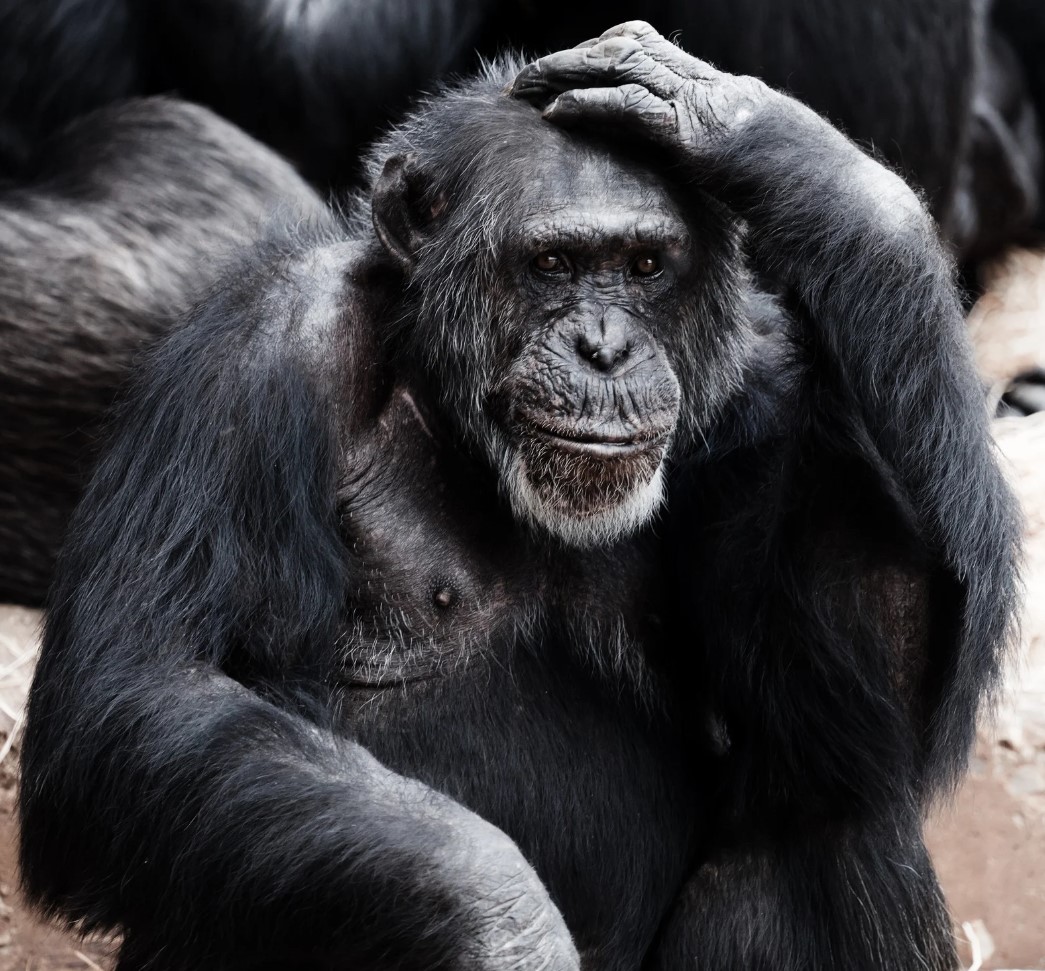
Rehabilitating Monkeys: Conservation Efforts And Successes
Rehabilitating monkeys is an important conservation effort that has gained much success in recent years. There are many reasons why monkeys require rehabilitation efforts, including loss of habitat, hunting, and poaching. Many organizations have taken up the cause to restore monkey populations through rehabilitation programs, some of which have seen great success.
One such program is the Orangutan Foundation International, which works to help orangutans in Borneo and Sumatra. The foundation provides care for injured and orphaned orangutans and works to rehabilitate them back into their natural habitats. Through this program, the foundation has successfully released numerous orangutans back into the wild, contributing significantly to the conservation of the species.
- The program aims to provide care for injured and orphaned orangutans
- The foundation works to rehabilitate orangutans back into their natural habitats
- Numerous orangutans have been released back into the wild, contributing significantly to the conservation of the species
Another successful rehabilitation program is that of the Gibbon Conservation Center, which works to rescue and rehabilitate gibbons in Thailand. The center provides care for injured and orphaned gibbons, and works to reintroduce them into their natural habitat. Thanks to the center’s efforts, numerous gibbon populations have been restored, greatly benefiting the species.
| Program | Focus | Success Metric |
|---|---|---|
| Orangutan Foundation International | Orangutans in Borneo and Sumatra | Many orangutans rehabilitated and released back into the wild |
| Gibbon Conservation Center | Gibbons in Thailand | Many gibbon populations restored through rehabilitation efforts |
While rehabilitation efforts are an important part of monkey conservation, it’s also vital to address the root causes of the issues that lead to rehabilitation in the first place. This includes working to prevent habitat loss, hunting, and poaching, as well as raising awareness of the importance of monkey conservation. By addressing these underlying issues, we can work to prevent the need for rehabilitation programs in the future.
In conclusion, monkey rehabilitation programs have been successful at restoring populations of endangered and threatened primate species back into their natural habitats. Through organizations like those mentioned above, numerous monkeys have been successfully released back into the wild, contributing significantly to their conservation. It’s important to address the root causes of the issues leading to rehabilitation, but rehabilitation efforts are an essential part of the conservation process.
Monkeys İn Religion And Culture: Symbolic Significance
Monkeys are creatures that are widely regarded as intelligent and playful. They live in many parts of the world, and because of their behavior and physical similarities to humans, they have become an important part of many cultures and religions. In this blog post, we will explore the symbolic significance of monkeys in various cultures and religions, as well as some of the beliefs and traditions associated with them.
Monkeys in Hinduism: The monkey god Hanuman is one of the most important deities in Hindu mythology. He is known for his loyalty, strength, and his ability to fly. Many Hindus believe that worshipping Hanuman will bring them strength, protection, and success. In some parts of India, monkeys are considered sacred and are fed regularly by locals.
Monkeys in Chinese culture: In Chinese culture, the monkey is one of the twelve zodiac animals, and people born in the year of the monkey are believed to be intelligent, ambitious, and adventurous. Monkeys are also associated with the legendary figure of Sun Wukong, who is known for his supernatural powers and his penchant for mischief.
| Monkeys in pop culture: | Monkeys in African culture: |
|---|---|
| Monkeys have been a popular subject in literature, movies, and television shows. Some famous monkey characters include Curious George, King Kong, and Rafiki from the Lion King. Many people also associate monkeys with the classic “see no evil, hear no evil, speak no evil” idiom. | In some African cultures, monkeys are associated with the trickster archetype. They are portrayed as mischievous and deceitful, but also as wise and cunning. In some African folktales, monkeys are the protagonists who outsmart their adversaries and win the day. |
In conclusion, monkeys have played a significant role in many cultures and religions throughout history. They have been revered and worshipped, feared and hunted, and celebrated in art and literature. Whether they are seen as divine beings, clever tricksters, or playful companions, monkeys continue to captivate our imaginations and inspire wonder and awe.
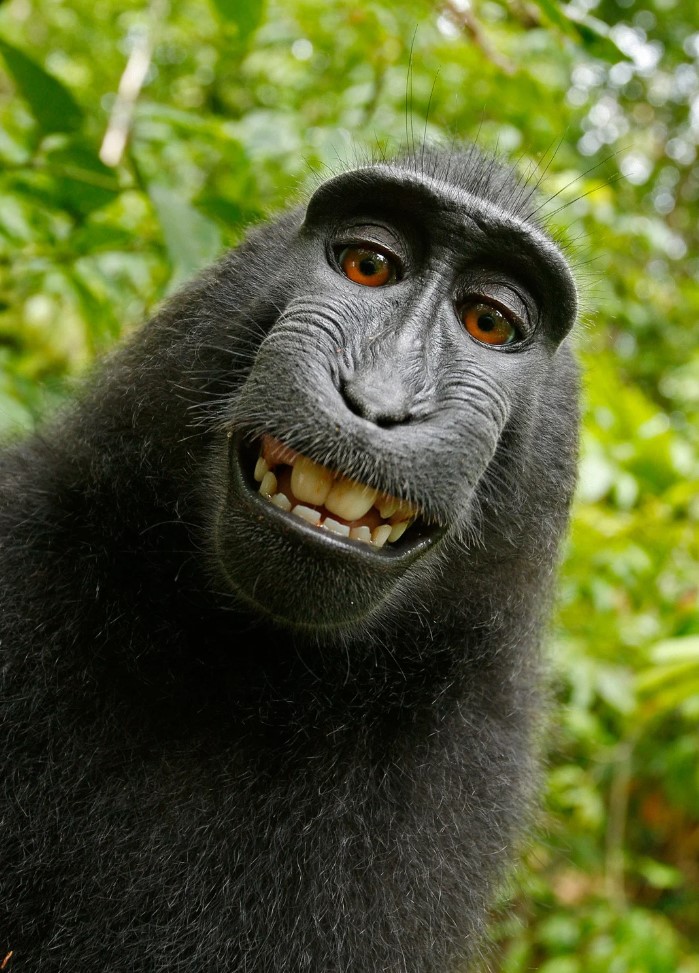
Famous Monkeys İn History And Pop Culture
Famous Monkeys in History and Pop Culture
From literature to entertainment, monkeys have been an integral part of various aspects of human culture. They have been depicted as playful and mischievous creatures or as helpful companions in popular works of fiction, making them an instantly recognizable character. Let’s take a look at some famous monkeys that have left an indelible mark on history and popular culture.
- Curious GeorgeCurious George is a beloved children’s book character created by H.A. and Margret Rey. The little monkey is known for his adventures and penchant for getting into trouble. His popularity led to several adaptations, including a television series and a movie.
- King LouieKing Louie is a character from Disney’s The Jungle Book. The orangutan is the leader of a group of monkeys and is known for his love of music and power-hungry ways. His famous song, “I Wan’na Be Like You,” has become an iconic piece of pop culture.
- ClydeClyde is the infamous capuchin monkey from the movie Every Which Way But Loose. The movie follows the adventures of a truck driver and his pet orangutan as they travel through the American West. Clyde’s quirky personality and mischievous behavior made him a fan-favorite character.
Monkeys’ popularity in popular culture can be attributed to their human-like qualities and endearing personalities. They have become an integral part of our collective imagination, cementing their place in history and popular culture.
Monkey Behaviour: Social Structure And Communication
Monkeys are one of the most fascinating creatures in the world, not just because of their cute appearance, but also because of their unique social structure and communication. The way monkeys interact with each other and communicate is a sight to behold. It is no wonder that they have been studied by numerous scientists around the world, trying to understand how their behavior works. In this blog post, we will take a closer look at their social structure and communication patterns.
Monkeys are highly social animals and live in groups of varying sizes. These groups can range from less than 10 to over 100 individuals. Within these groups, there is a hierarchical system, where each monkey has their own rank. The higher-ranking monkeys are often the dominant ones, and they have access to more resources, such as food and mates. Conversely, the lower-ranking monkeys have limited access to resources and often have to work harder to survive. This hierarchy is established through various means, such as physical displays, vocalizations, and grooming.
- Physical displays: Monkeys use physical displays such as posturing, charging, and chasing to establish their dominance over other monkeys. The higher-ranking monkeys often display more aggressive behavior, and the lower-ranking monkeys try to avoid them to reduce the risk of violence.
- Vocalizations: Monkeys use a variety of sounds to communicate with each other. These vocalizations can range from warning calls to mating calls. Each monkey has its own unique voice, and they use these sounds to recognize each other.
- Grooming: Grooming is an important part of monkey behavior. It is a way for monkeys to bond with each other and maintain social relationships. Monkeys groom each other to remove parasites and dirt from their fur, but it also helps to create a sense of trust and cooperation between group members.
Communication is not limited to just within the group. Monkeys also use different communication methods to warn each other of potential dangers. For example, when a predator is near, monkeys let out alarm calls that inform other members of the group to be on alert. In some cases, they even work together to scare off predators by using coordinated behaviors.
In conclusion, monkeys are highly social animals that have a unique social structure and communication pattern. Through physical displays, vocalizations, and grooming, monkeys establish a hierarchy within their groups. Communication is not limited to just within the group, and monkeys also use different methods to communicate the presence of predators to other members of the group. Their behavior is fascinating and shows just how complex and intelligent these creatures are.
Eating Habits Of Monkeys: What Do They Eat?
Monkeys are known for their playful nature and their unique features. They are intelligent creatures that have adapted well to various habitats around the world. One of the most interesting aspects of monkeys is their diet. They have a diverse range of eating habits and consume a variety of foods depending on the species and the habitat they live in.
While some monkey species are herbivorous and feed on leaves, fruits, and flowers, others are omnivorous and consume insects, eggs, and small animals. For instance, the howler monkey, which is one of the largest species of monkey, is mostly herbivorous and feeds on leaves, fruits, and flowers in the tropical rainforests of South America.
On the other hand, the capuchin monkey, which is known for its intelligence and tool-making skills, is omnivorous and feeds on insects, small animals, and plant matter. They are even known to use stones as a tool to break open nuts and fruits.
- Monkeys such as baboons and macaques are opportunistic feeders, which means they will eat almost anything they can find, including fruits, insects, small animals, and even human food.
- Gibbons, which are small apes found in Southeast Asia, are primarily frugivorous, meaning they mainly eat fruits.
- The colobus monkey, which is found in Africa, is folivorous and feeds mainly on leaves.
| Monkey Species | Diet |
|---|---|
| Howler monkey | Leaves, fruits, and flowers |
| Capuchin monkey | Insects, small animals, and plant matter |
| Baboons and macaques | Fruits, insects, small animals, and human food |
| Gibbons | Fruits |
| Colobus monkey | Leaves |
The diet of monkeys varies widely, and many species have adapted their feeding habits to suit their environment. The diversity in their eating habits has also made them an important part of the ecosystem as they disperse seeds and help to maintain the balance of the ecosystem. Unfortunately, human activities such as deforestation and hunting have put many monkey species at risk, making it important for us to protect them and their habitats.
In conclusion, the eating habits of monkeys are varied and diverse, with some species being herbivorous, others omnivorous, and some being primarily frugivorous. Understanding their diet and feeding habits is crucial in the efforts to protect them from extinction and preserve their natural habitats.
Monkey Reproduction And Life Cycle
The reproduction and life cycle of monkeys is an interesting and complex topic. With over 260 species of monkeys in the world, there are a variety of reproductive strategies and fascinating life cycles to explore. Monkeys have been observed to exhibit unique behaviors and adaptations that allow them to effectively reproduce and sustain their population.
There are several factors that influence monkey reproduction, including social structure, habitat, and resources. In general, female monkeys go through estrus cycles, which is when they are most fertile and receptive to mating. During this time, male monkeys will compete for the opportunity to mate with a female. The gestation period for monkeys varies depending on the species, but typically lasts between 120-180 days.
- Female monkeys will typically give birth to one or two offspring at a time, although some species may have litters of up to six or seven.
- After birth, the mother will care for her young and provide them with milk. The length of time that a mother will nurse her young varies depending on the species, but can last from a few months up to a year or more.
As the young monkeys grow, they will begin to play and interact with others in their social group. Monkeys are highly social creatures, and their interactions with others help them develop important skills and behaviors needed for survival. As the young monkeys mature, they may become sexually mature and begin to reproduce themselves.
| Stage of Monkey Life Cycle | Description |
|---|---|
| Infancy | Monkeys are born helpless and rely on their mothers for milk and care. They develop rapidly and gain strength and coordination as they grow. |
| Juvenile | As young monkeys mature, they begin to explore and play with others in their social group. They learn important skills and behaviors needed for survival. |
| Adulthood | Once monkeys reach sexual maturity, they may begin to reproduce and start their own families. Male monkeys may compete for the opportunity to mate with females. |
| Old Age | Monkeys may begin to experience a decline in health and reproductive fitness as they age. In some species, older monkeys may become less socially active and withdraw from their group. |
Overall, the reproduction and life cycle of monkeys is a fascinating topic that provides insight into these amazing creatures. By understanding the complexities of monkey reproduction and development, researchers and conservationists can better protect and support these important animals in the wild.
Monkey İn Research: Medical And Behavioural Studies
Monkeys have been a subject of research for decades, their highly intelligent nature and similarity to humans makes them ideal for medical and behavioural studies. Monkeys are the closest relatives to humans, and this has made them suitable for various kinds of experiments since they are genetically similar. In this article, we will delve into some of the medical and behavioural studies that have been carried out using monkeys.
The use of monkeys in medical research has enabled scientists to come up with cures and treatments for various human diseases such as Parkinson’s disease, Alzheimer’s, and cancer. The monkeys have a similar immune system to humans, making them ideal subjects for vaccine development. Medical research has also been instrumental in developing treatments for the Ebola virus, and the COVID-19 vaccine was also tested on monkeys before it was approved for human use.
- Monkeys are vital in behavioural studies concerning addiction, stress, and depression. Scientists have used monkeys to identify brain circuits that trigger a decision where animals repeatedly consume drugs, leading to addiction.
- Monkeys have also been used to study social behaviour, where scientists have observed how they live and interact in groups, form alliances, reconcile conflicts, and even develop social hierarchies. Researchers have also pointed out that monkeys can be taught certain behaviours, for example, social behavior, where they can be trained to distinguish faces, recognize emotions, and even engage in joint activities.
- Researchers have also studied monkeys to learn more about their cognitive abilities, including the ability to use language, memories, and how they learn. This has led to discoveries that monkeys have the capacity to learn sign languages, use tools to access food and even exhibit a sense of self-awareness.
In conclusion, monkeys have been a critical part of medical and behavioural studies that have led to numerous valuable discoveries in these areas. However, the use of monkeys in these experiments has sparked controversy over the years, with animal rights campaigners raising concerns about cruelty and inhumane treatment of the animals subjected to this kind of research. There are ongoing debates and regulations concerning the use of monkeys in experimental research, with scientists usually using alternatives like in-vitro methods, computer models, and other techniques.